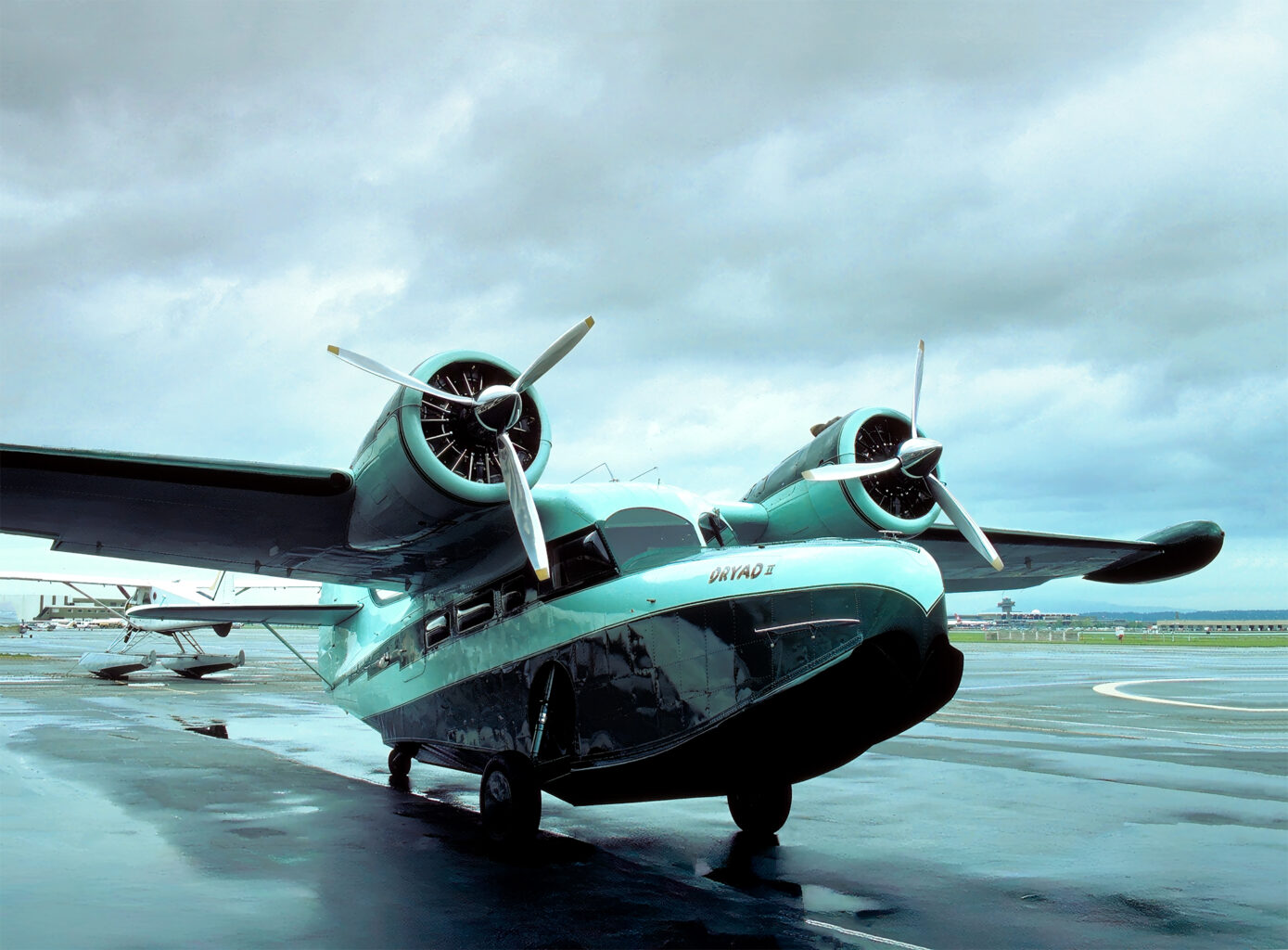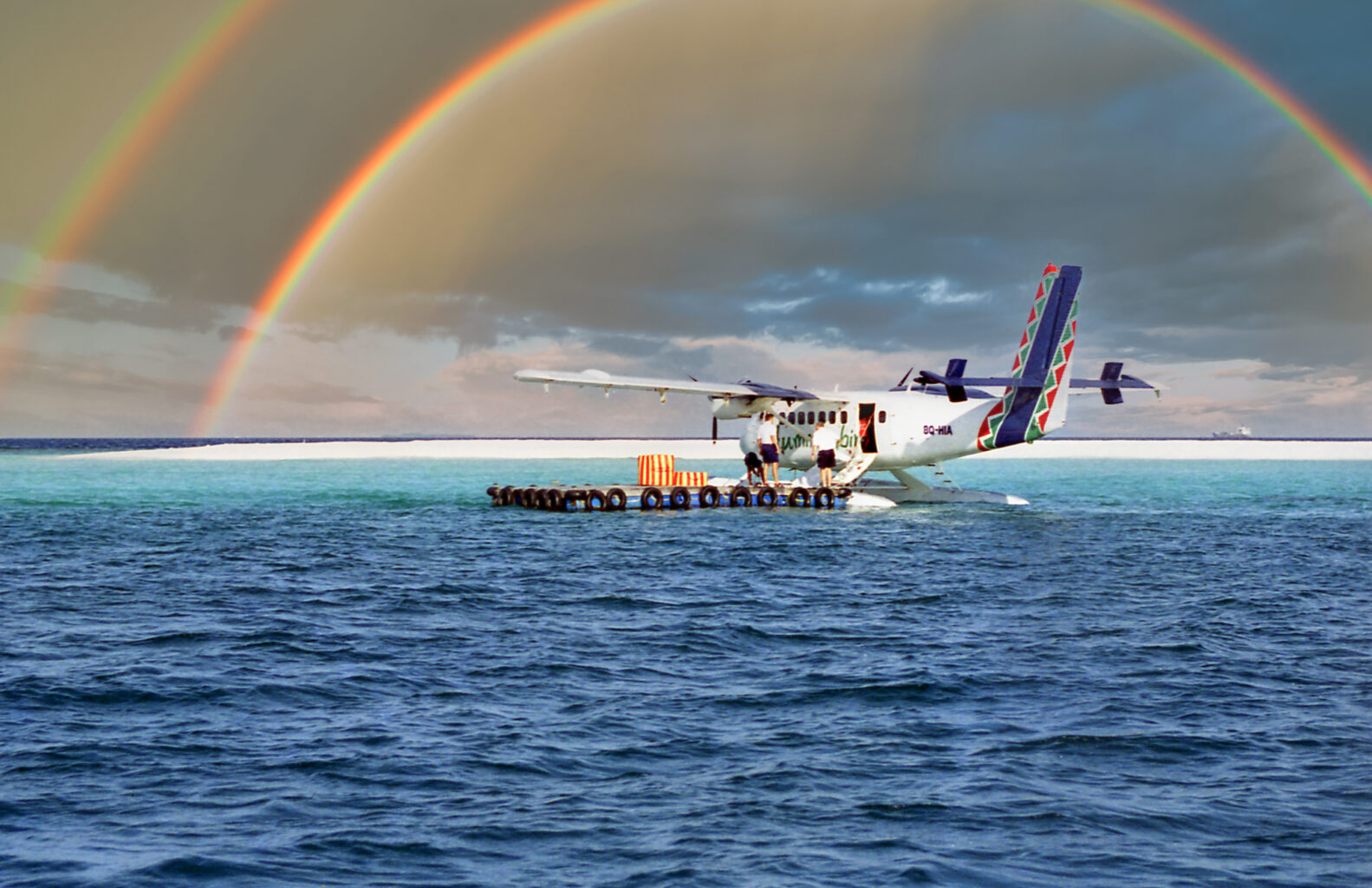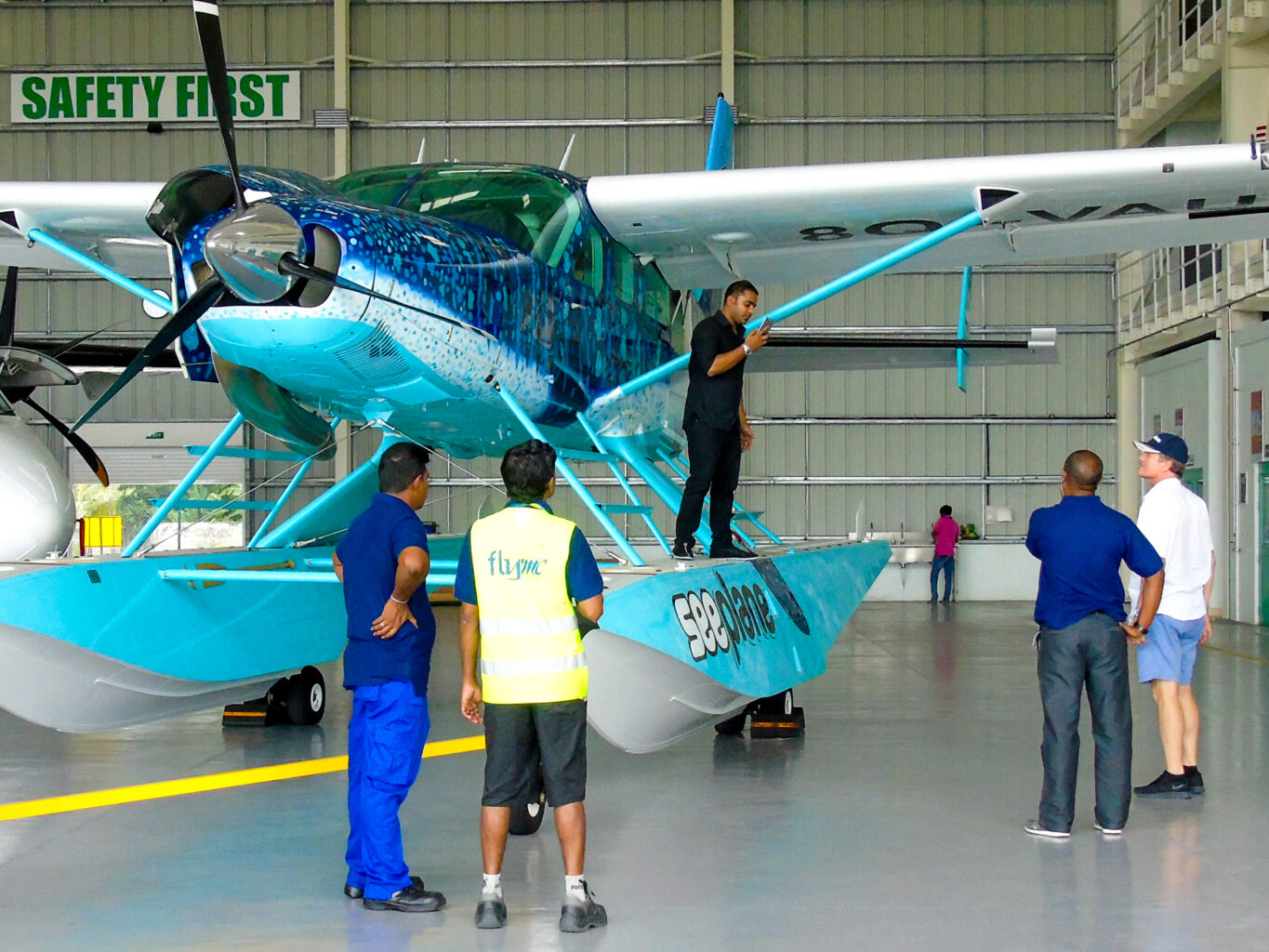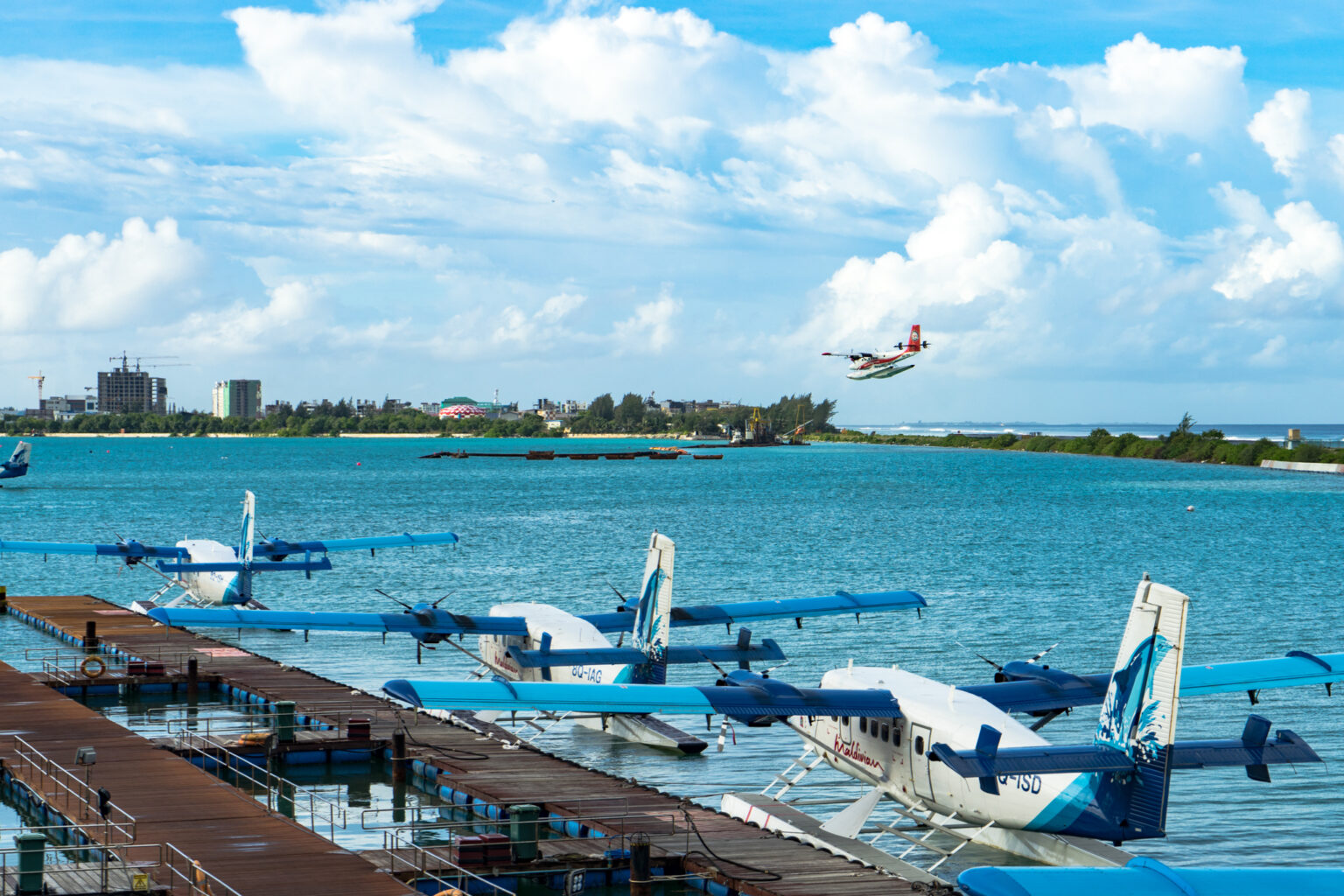Part Four of: What is the Difference Between a Floatplane and a Seaplane?

In part three, I covered sea states and the importance of operators having seaworthy aircraft and sea-ready pilots. Here, I will look deeper into seaworthiness and how flying boats and amphibians can make a difference.
The Pan Am Clippers are the most revered by those who care and are mostly forgotten by those who do not care about the flying boats. The Clippers, named after the tremendous romantic sailing ships of the early 19th century, were not one aircraft but a series of flying boats that fit the bill for Pan Am’s ambitions to build a global-empire-in-the-sky kind of airline. Sikorsky, Martin, and Boeing built some of the era’s biggest and most badass flying boats.
Then there were Consolidated, Grumman, Dornier, Supermarine, and Douglas, all of whom contributed to the most iconic of the pre-war flying boats. Some of these, such as the PBY Canso, Martin Mars, and Grumman Goose, have continued flying up to the present day.

My Bad. I have not included the Canadair CL-215 in these discussions. I will leave it to you to figure out why.
Amphibian: A fixed-wing airplane that can take off and land on land and water. An amphibian aircraft can be a floatplane or flying boat outfitted with retractable gear designed to extend for runway landings and retract for water landings. For example, the Viking Twin Otter and Cessna C208B EX can be configured for landplane only, floatplane only, or amphibian floatplane by installing the Wipline 13000 and the Wipline 8750 floats respectively, with or without retractable gear. Floats without retractable landing gear are called straight floats.
If it flies like a duck, swims like a duck, and walks like a duck, then it is an amphibian.
A flying boat can always alight on water but can be configured with landing gear to land on land. The PBY Catalina (Canso) started as a flying boat and was later converted for amphibious operations. “Amphibian” refers to the configurational change made to a floatplane or a flying boat by adding retractable gear. Amphibian gear conveniently enables an airplane to land on either land or sea.
Therefore, you cannot just call a flying boat with gear an amphibian and expect everyone, even know-it-alls, to understand to which seaplane configuration you are referring. Saying that a seaplane is amphibian does not mean it is a flying boat. Being amphibious relates only to the ability to land on land and alight on water. Period. End of story. Stop it.
Having amphibious gear on a seaplane is a compromise. What you gain in operational flexibility (using airports and ramps), you lose in payload and buoyancy. The gear, often steel and magnesium, will corrode overnight in saltwater, whereas straight floats can be left in saltwater for extended periods before showing any corrosive damage. The only reason you need amphibious gear is to fly to airports. If you don’t need them, don’t have them. There is a compelling business case for being able to fly seaplanes into airports, but I will leave that discussion for later.

Seaworthiness: Some seaplanes are more seaworthy than others. Floatplanes are awkward in rough water and are prone to submarining and wallowing. On Wipline floats, the Twin Otter is the most seaworthy floatplane in operation today. The Caravan C208-EX with the Wipline 8750s is the next down the line. The extra buoyancy and wider stance make water operations, taxiing, takeoff and alighting safer and more efficient. The more capable the seaplane is, the more likely the operator can reach the goal of operating in any waterdrome 365 days of the year.
Considering floatplanes have dominated the world’s waterways (like dinosaurs dominated the world for 179 million years before man took over in the last, I am embarrassed to say this, TWO THOUSAND YEARS; it did sound better in all caps) for the past 50 years (coincidentally, I have been flying for at least 50 years), how do we know which seaplane configuration (species) works best going forward? Flying boats or floatplanes?
Here are the facts: Floatplanes have two small pontoons attached via a lacing of struts, spreader bars, flying wires, and mounting attachments. Flying boats have large hulls and no need for flying struts, wires, or spreader bars, eliminating unnecessary parasitic drag.

The in-water hull lowers the center of gravity, increasing lateral stability during taxiing in large waves or swells. The flying boat design also allows for a longer keel to add longitudinal stability in heavy seas.
The large deep-V hull enables efficient water displacement on landing (preventing damaging impact forces) and on takeoff to reduce drag while traversing over the hump and during planing. The quicker an aircraft wing can start producing lift, the quicker it can lessen the impact loads from oncoming swells and the smoother the takeoff.
Also, the less drag along the hull, the more power is available for thrust. For a seaplane, trust is everything. Generally, you want your propeller to pull upwards rather than forward on a floatplane. This is called hanging on the prop. It’s a seaplane pilot’s way to increase the angle of attack without increasing speed. That sounds counterintuitive, but less speed means lower impact forces from incoming swells, whereas an increased angle of attack means more lift and less weight on the floats or hull. The effectiveness of additional thrust and increased lift depends on the aircraft’s stall speed and the consequential angle of attack/lift ratio. Compare videos of Twin Otters and Caravans taking off or landing on water.
First, the Twin Otter has a fat wing, giving it a lift advantage. Second, the Twin Otter stall speed is 3 knots slower, allowing it to become airborne quicker and land slower. Finally, the Caravan is mounted on the floats with a noticeable upward angle of attack. This might be to compensate for the engine being canted down and to the right, but the result is that the Caravan is nose-high during the initial takeoff runs and landing. The Twin Otter develops its takeoff speed and lift while pulling straight ahead. The Caravan prop has to pull upward to get the speed and lift it needs for takeoff.
All these design differences give the Twin Otter slower landings and takeoff speeds in rough water, with a significant decrease in impact speeds. My point is that small design tweaks can make a big difference in open-water performance. The other point is that flying boats pull straight ahead, maximizing their thrust naturally via their design. Overall, flying boats and their other attributes of minimized drag and increased stability are more efficient on the sea.

The Albatross, one of the most elegant flying boats, was built to handle Beaufort Scale Force 4 with wave heights of 1.0 to 1.5 meters. The Mallard, a smaller but similar design to the Albatross, was designed to be an amphibious commercial transport aircraft and was the first aircraft certified in the FAA transport category. Based on my experience with the Grumman Goose and the PBY, I would venture to the possibility that either of these designs can handle much more than what they were certified for. Imagine what it could do with some modern tweaks. I believe the Mallard, the Albatross, and other modern designs like these, have the best chance of being revived and/or redesigned for success in the modern world.
Modern proprietary software that uses state-of-the-art techniques to analyze hull hydrodynamics, compute fluid dynamics, and analyze structural stress can provide data for OEMs to build faster, lighter, and more efficient seaplanes. Visualizing drag, turbulence, boundary conditions, and otherwise invisible forces using computational fluid dynamics appears to be the next step in perfecting the hydrodynamics of a hull or the aerodynamics of wings, but honestly, I am not sure how much this is used in the aviation world. If not, why not?

Combining the power of cutting-edge technology with modern designs influenced by advanced computer-aided aerodynamics can improve good designs. The question is, does this require manufacturers to build new seaplanes or remodel the proven designs? That is the realm of engineers, FAA design certifications and legal liabilities. In my final installment, I will cover the future commercial opportunities for seaplanes and amphibious aviation. Success or Failure? What are the deciding factors?
Part Five: Seaplane Future. Success or Failure?


